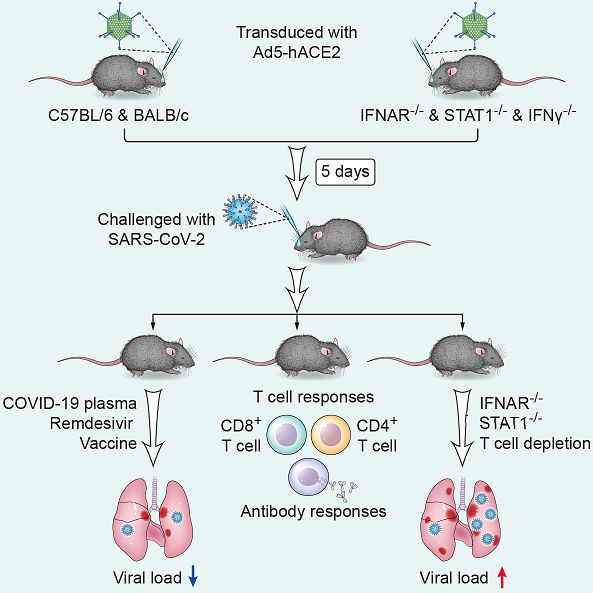First non-transgenic mouse model improves virus study
By Huang Lanlan Source:Global Times Published: 2020/6/12 23:08:40

The first non-transgenic murine model of COVID-19. Photo: Courtesy of the research team
China's top medical expert Zhong Nanshan's team in Guangzhou, South China's Guangdong Province, recently developed the world's first non-transgenic mouse model of COVID-19, which significantly improves COVID-19-related research and vaccine and therapeutic testing, one researcher told the Global Times on Friday.
The study, published by Cell, a leading scientific journal, on Wednesday, describes a murine model of broad and immediate utility used to investigate COVID-19 pathogenesis, and evaluates new treatments and potential vaccines, said the team, which is part of China's top medical expert Zhong Nanshan's group.
The development of the mouse model will expedite the testing and deployment of treatments and vaccines, said the Cell article, titled "A SARS-CoV-2 infection model in mice demonstrates protection by neutralizing antibodies."
The model effectively alleviated the shortage of COVID-19 in animal models, Zhao Jincun, the team leader and deputy director of the State Key Laboratory of Respiratory Disease (SKLRD) in Guangzhou Medical University, said at a press conference in Guangzhou on Friday.
At present, most of the COVID-19 related animal experiments use transgenic mice, which are time-consuming and limited in number, said Sun Jing, one of the study's first authors and a SKLRD member.
"Such traditional models require months to breed the mice to an appropriate age and numbers for the experiment," Sun told the Global Times on Friday, saying "it delays the in vivo validation process of the treatments, drugs, vaccines, and pathogenic mechanisms of COVID-19 pneumonia."
The team's non-transgenic murine model, incontrast, only required five days for researchers to deliver human angiotensin-converting enzyme 2 (hACE2) with a replication-deficient adenovirus (Ad5-hACE2) to the lungs of mice of any strains, largely reducing the experimental period, Sun added.
The preliminarily model was developed in February, with the team spending the next three months completing pathological, serum, and drug tests with more than 500 non-transgenic mice.
Some tests had suggested that plasma therapy and drugs including Redesivir can significantly reduce viral load in the lungs, said Li Fang, another member of the team and SKLRD.
The team has shared the model with many Chinese domestic medical institutes and vaccine producers, saying that "we will continue working with the country's medical experts to complete further tests of COVID-19 vaccines and clinical drugs," Li told the Global Times.
The team consisted of members from SKLRD, Guangdong Inspection and Quarantine Technology Center, Guangzhou Regenerative Medicine and Health Guangdong Laboratory, Guangzhou Institutes of Biomedicine and Health under Chinese Academy of Sciences, and the US-based University of Iowa.
RELATED ARTICLES:
Posted in: SOCIETY